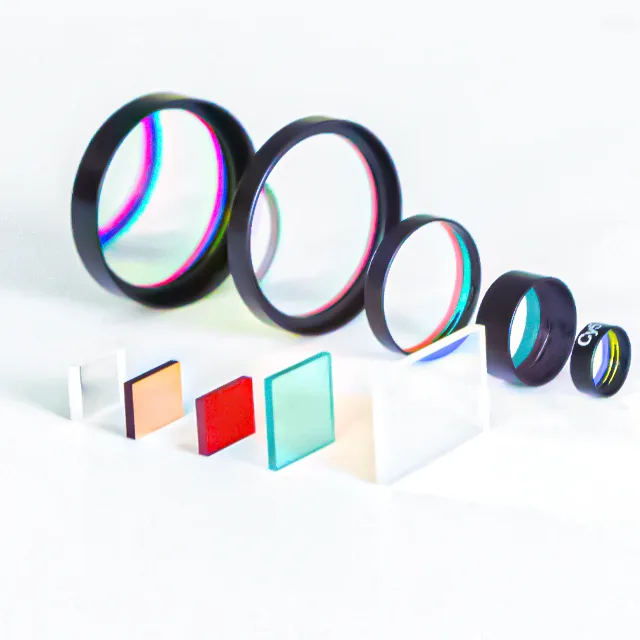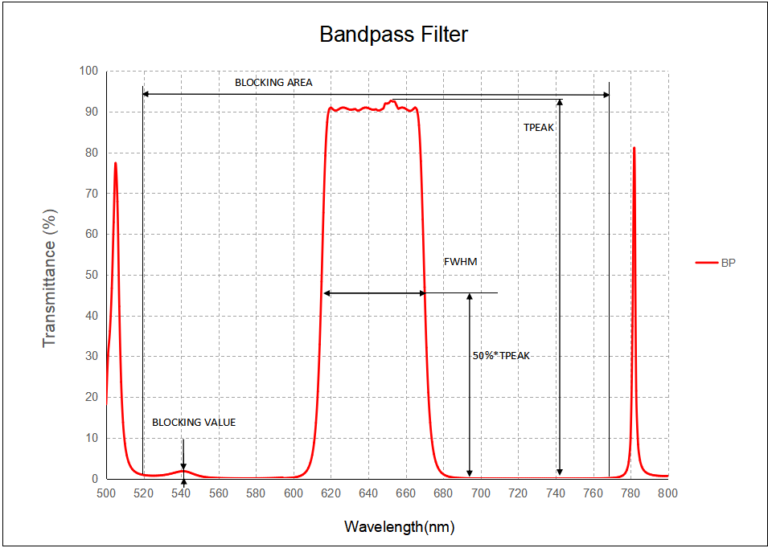Designing an Optical Band Pass Filter is a fascinating journey into manipulating light. This process involves crafting a filter that allows specific colors to pass through while blocking others. Whether you’re delving into photography or scientific research, this tool offers a creative way to shape light to your advantage.
By choosing transparent materials, selecting coatings, and determining layer thickness, you’ll create a filter that acts as a gatekeeper for wavelengths. Through simulations and real-world tests, you’ll fine-tune your design to achieve desired outcomes. With each adjustment, you’ll move closer to a filter that enhances colors, aids scientific analyses, and adds a touch of magic to the world of optics.
Optical Band Pass Filter: What is it?
An Optical Band Pass Filter is a special device used in optics and photography. It lets a specific range of light wavelengths pass through while blocking others. Imagine it as sunglasses for light!
It’s super handy because it helps to isolate certain colors or wavelengths of light. For example, in photography, you can use it to capture only certain colors, making your photos look unique.
These filters consist of transparent materials that are carefully designed. They work like a gatekeeper, allowing only the desired colors to go through and keeping the rest out.
People use them in various fields like science, photography, and even in some lighting systems. They help to reduce unwanted glare or emphasize certain parts of an image.

What is the methodology of a optical band pass filter?
I’d be happy to explain the methodology of an Optical Band Pass Filter!
Light Selection: The filter is like a bouncer at a club, choosing which light wavelengths can enter. It’s picky about the colors it lets through.
Material Magic: These filters are made of transparent materials, often glass or plastic, coated with special substances. These coatings help in allowing only specific wavelengths to pass.
Design Precision: Engineers carefully design the filter’s thickness and coatings to create the desired effect. It’s like crafting a unique recipe for each filter.
Two-Step Action: The filter works in two steps. First, it blocks light with wavelengths that are too short or too long. Then, it permits a narrow range of wavelengths to pass through.
Wavelength Window: Think of the filter as a window that’s only open for a specific wavelength range. This range is what we call the “band.”
Pass and Block: The filter “passes” the wavelengths within its chosen band and “blocks” the others, ensuring only desired colors or signals get through.
Application Variety: These filters have lots of uses. In photography, they can make colors pop or reduce unwanted light. In science, they help analyze specific light emissions.
Spectacular Science: In scientific experiments, researchers use them to isolate certain wavelengths, aiding in tasks like studying molecular properties.
Photography Play: Photographers employ these filters to create mood and emphasis by selecting specific colors or reducing atmospheric haze.
Light Control: Optical Band Pass Filters are like conductors in an orchestra, orchestrating the perfect blend of colors to create beautiful visual symphonies.
Limits and Limitations: It’s essential to note that these filters have limitations. They’re effective within a specific wavelength range, but can’t filter out all unwanted light.
Quality Matters: The quality of the filter matters. Cheaper versions might not have precise coatings, leading to less accurate filtering.
How To Design A Optical Band Pass Filter?
Let’s break down the process of designing an Optical Band Pass Filter with more in-depth explanations:
Determine Purpose: Clearly define the purpose of your filter. Are you aiming to enhance specific colors in photography, analyze light emissions in scientific experiments, or achieve some other goal? This initial understanding sets the foundation for your design.
Wavelength Range: Decide on the range of wavelengths you want your filter to allow. This range is your “band,” and it’s crucial to specify it accurately based on your application’s requirements.
Choose Materials: Select transparent materials that work well with the desired wavelength range. Materials like glass or plastic are common choices. Ensure they have good optical transparency and can be coated effectively.
Coating Selection: Coatings are the key to achieving the desired filtering effect. Choose coatings that have specific optical properties, such as reflecting or transmitting certain wavelengths. The choice of coating materials and thickness greatly influences the filter’s behavior.
Reflectance and Transmittance: Calculate the amount of light the filter reflects and transmits within the chosen wavelength range. This helps you assess how effective the filter is at allowing the desired wavelengths to pass through while blocking others.
Refractive Index: Take into account the refractive index of the materials you’re using. This index affects how light bends when it passes through the filter, so it’s important for maintaining the filter’s accuracy.
Layer Thickness: The thickness of the coatings and layers on the filter plays a significant role in determining how effective it is at allowing specific wavelengths to pass. Adjusting the thickness can help fine-tune the filter’s behavior.
Simulation Software: Utilize specialized software tools to simulate the filter’s optical performance based on the chosen materials, coatings, and thicknesses. This allows you to predict how the filter will behave before physically manufacturing it.
Design Iterations: Expect to go through several rounds of adjustments and simulations. Tweaking parameters like coating thickness or materials may be necessary to achieve the desired filtering effect.
Fabrication Techniques: Choose appropriate manufacturing methods, such as physical vapor deposition (PVD) or ion-assisted deposition (IAD), to apply coatings onto the filter’s substrate.
Quality Control: During the manufacturing process, maintain strict quality control measures to ensure the coatings and layers are consistent and meet the desired specifications.
Testing Procedures: Test the fabricated filter using a spectrophotometer or other specialized equipment. This helps measure its actual performance and compare it to the predicted results from simulations.
Tuning and Optimization: Based on the test results, make adjustments to the filter’s design if necessary. Fine-tune parameters like layer thickness or coatings to optimize the filter’s performance.
Real-world Conditions: Consider how the filter will perform under different lighting conditions, angles, and environmental factors. This ensures that the filter behaves consistently and effectively in various situations.
Practical Considerations: Keep in mind practical aspects like filter size, durability, and compatibility with the equipment you’ll be using. A filter that fits seamlessly into your setup enhances its usability.
Prototyping: Create a physical prototype based on the refined design. This prototype allows you to validate the filter’s performance in real-world scenarios.
Fine-tuning: Evaluate the prototype’s performance and make additional adjustments if needed. This iterative process might involve further refinements to achieve the desired results.
Feedback Loop: Collaborate with experts, colleagues, or users to gather feedback on the filter’s performance. Their insights can help identify areas for improvement.
Documentation: Keep detailed records of the entire design process, including material choices, simulations, adjustments, and test results. This documentation is invaluable for future reference and improvements.
Production Scaling: If your prototype proves successful, scale up the manufacturing process to produce larger quantities of the filter while maintaining the same quality and performance.
User Guidelines: Provide clear instructions for using and maintaining the filter. This ensures that users get the best results and longevity from the product.

FAQs
What is an Optical Band Pass Filter?
An Optical Band Pass Filter is a device that allows a specific range of light wavelengths to pass through while blocking others. It’s like a color gatekeeper!
How does it work in photography?
In photography, it enhances or limits certain colors, adding unique effects to images.
Are these filters versatile?
Yes! They’re used in photography, science, and even lighting systems to control light colors.
